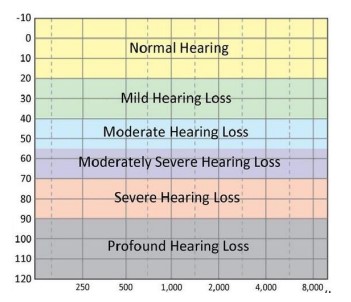_1.jpg?branch=web_prod)
Audiometry: The What, How and Where?

Audiometry: The What, How and Where?
10 min.
Publication Date: 31 August 2023
Hearing is an integral part of our everyday lives, enabling us to communicate, enjoy music, and stay aware of our surroundings. However, hearing loss can significantly impact our quality of life. Audiometry, a diagnostic procedure used to assess hearing abilities, plays a crucial role in identifying hearing impairments and determining appropriate interventions.
In this article, we will explore the concept of audiometry, the different types of audiometry tests, their interpretation, and the professionals involved in conducting these tests.
Overview :
- What Does Audiometry Test?
- What Are the Two Types of Audiometry?
- What is the Normal Audiometry Range?
- What's the Difference Between Audiometry and the Audiogram?
- How to Do An Audiometry Test?
- Audiometry Results Explained
- Screening Audiometry vs. Diagnostic Audiometry
- Where to Get an Audiogram?
- Summary
- Reference

What Does Audiometry Test?
Audiometry is a comprehensive assessment of an individual's hearing abilities. It aims to measure the softest sounds a person can hear at different frequencies, known as pure tone audiometry, and assess their ability to understand speech, known as speech audiometry.
These tests provide valuable information about the degree, configuration, and type of hearing loss, helping healthcare professionals develop effective treatment plans.
What Are the Two Types of Audiometry?
There are two main types of audiometry, namely Pure Tone Audiometry and Speech Audiometry.
What is the Normal Audiometry Range?
The normal audiometry range is based on the hearing thresholds of individuals with typical hearing. In adults, normal hearing is defined as thresholds of 20 decibels(dB) or better across all frequencies tested.1
For children, the range may be slightly different due to developmental considerations. Any deviation from the normal range suggests the presence of hearing loss.
Figure ref: https://www.stgeorges.nhs.uk/wp-content/uploads/2019/03/How-To-Read-Your-Hearing-Test-Results.pdf

What's the Difference Between Audiometry and the Audiogram?
Audiometry and the audiogram are closely related but distinct concepts.
Audiometry refers to the overall process of assessing hearing, including both pure tone and speech tests. It involves the use of specialized equipment and standardized protocols to obtain accurate measurements.
An audiogram, on the other hand, is a graphical representation of the results obtained during the audiometry test. It plots the hearing thresholds at various frequencies on a chart, enabling easy visualization and interpretation of the patient's hearing abilities.1
Red = Right ear; Blue = Left ear
Figure ref: https://www.stgeorges.nhs.uk/wp-content/uploads/2019/03/How-To-Read-Your-Hearing-Test-Results.pdf

How to Do An Audiometry Test?
- Pure tone audiometry is conducted in a soundproof booth or a quiet room to eliminate ambient noise and ensure accurate measurements.
- You will be seated comfortably and the audiologist will use an audiometer to present tones of different frequencies and varying intensities or loudness.
- You will be instructed to respond each time you hear a tone by raising your hand or pressing a button.
- First, you will do this while wearing over-the-ear headphones or insert earphones, which determines the softest sounds you can hear via air conduction.
- Next, your bone conduction thresholds will be measured via a vibrating transducer placed on the mastoid process, the bone behind your outer ear.
- The test is repeated for each frequency, and the results are recorded on an audiogram. Most commonly, tones at the test frequency are presented at decreasing loudness levels (in 5 or 10 dB steps) until they become inaudible. The tones are then presented at increasing intensity until they become audible and you start responding again. This procedure is known as the Hughson-Westlake method.2
Audiometry Results Explained
Speech audiometry
results provide insights into the patient's ability to understand speech at different volumes. Interpreting pure tone audiometry results requires analyzing the audiogram and considering the patient's responses. The audiogram provides information about the patient's hearing thresholds at various frequencies, measured in decibels (dB). The lower the threshold, the better the hearing sensitivity.
The configuration or shape of the audiogram (e.g. flat, sloping, or steeply sloping) indicates the type of hearing loss.
In the case of a hearing loss, the difference between the air conduction and bone conduction thresholds on the audiogram provides information about the site of lesion, or where the problem may lie. For example:
Screening Audiometry vs. Diagnostic Audiometry
Screening audiometry and diagnostic audiometry serve different purposes. Screening audiometry aims to quickly identify individuals with potential hearing loss and determine if further evaluation is necessary. It is often used in schools, workplaces, primary care settings or online.
Diagnostic audiometry, on the other hand, involves a comprehensive evaluation of an individual's hearing abilities. It provides detailed information about the type, degree, and configuration of hearing loss, facilitating appropriate management and intervention.
Where to Get an Audiogram?
Audiometry tests are conducted by licensed audiologists or hearing healthcare professionals trained in audiology. These professionals have in-depth knowledge of the auditory system, hearing disorders, and appropriate testing protocols. They possess the expertise to accurately administer the tests, interpret the results, and provide appropriate recommendations for further evaluation or intervention.
Summary
Audiometry plays a vital role in diagnosing hearing impairments, determining the type and degree of hearing loss, and guiding appropriate interventions. By conducting pure tone and speech audiometry, audiologists can obtain a comprehensive understanding of an individual's hearing abilities. Understanding the results and interpreting the audiogram provides valuable information for treatment planning and improving the quality of life for those with hearing loss.
Reference:
- How to Read Your Hearing Test Results (2019). St Georges Hospital. Retrieved from https://www.stgeorges.nhs.uk/wp-content/uploads/2019/03/How-To-Read-Your-Hearing-Test-Results.pdf on 28 June 2023.
- Salmon, M. et al. (2023). Audiogram Interpretation. In: StatPearls [Internet]. Treasure Island (FL): StatPearls Publishing; 2023 Jan-. Retrieved from https://www.ncbi.nlm.nih.gov/books/NBK578179/ on 28 June 2023.
The information contained in this article is for educational and informational purposes only. You should not use the information as a substitute for, nor should it replace, professional medical advice. If you have any questions about your health, you should always consult with a physician or other health-care professional.
.png?branch=web_prod)
_1.jpg?branch=web_prod)
_1.jpg?branch=web_prod)
.png?branch=web_prod)